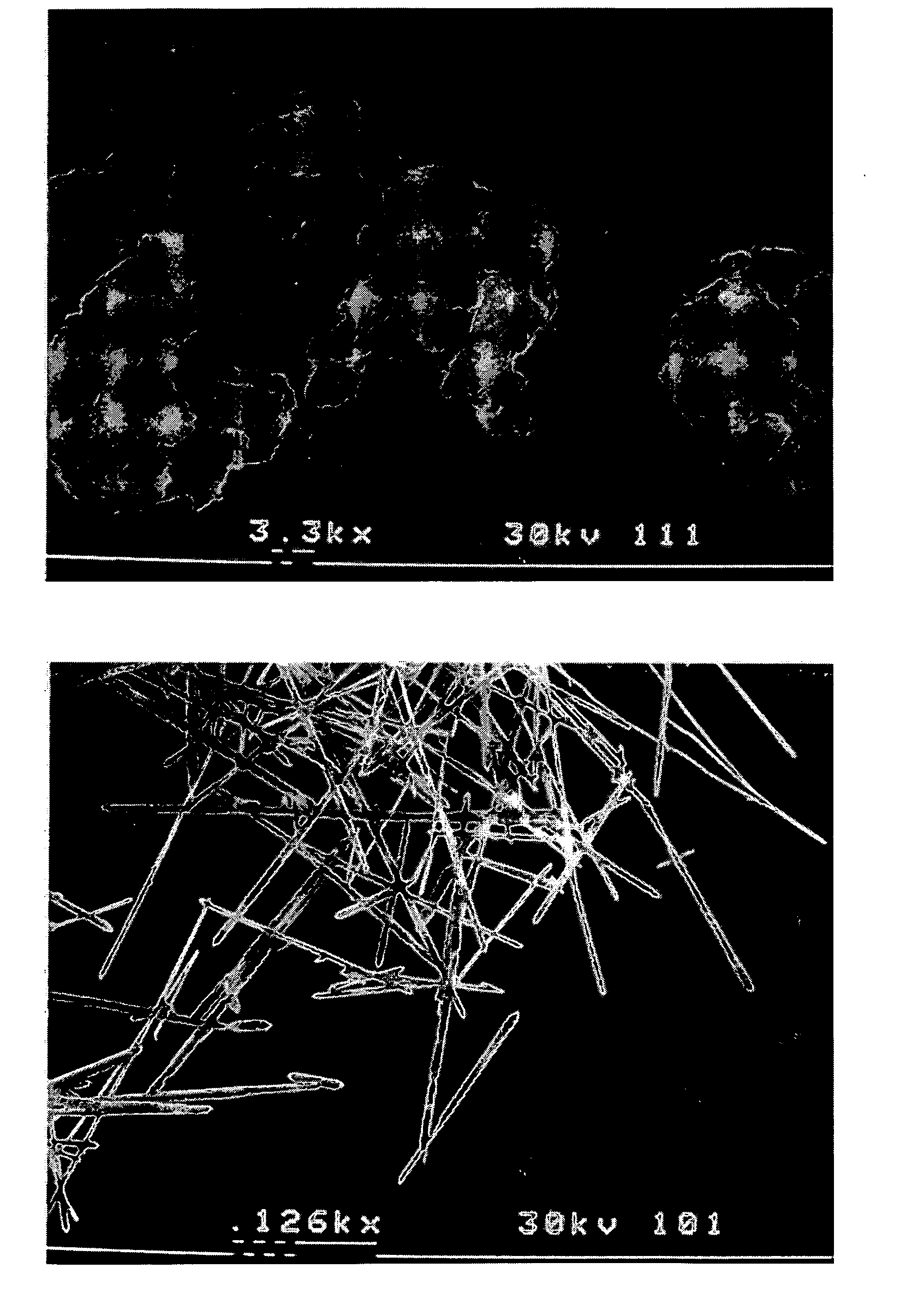Methods of modifying crystal habit
a technology of habit modification and crystal habit, which is applied in the directions of powder delivery, medical preparations, pharmaceutical delivery mechanisms, etc., can solve the problems of acicular and plate-like crystal habit in product manufacturing, and unfavorable polydisperse particle size distribution
- Summary
- Abstract
- Description
- Claims
- Application Information
AI Technical Summary
Benefits of technology
Problems solved by technology
Method used
Image
Examples
example 1
Synthesis of the Crystal Growth Inhibitor
[0048] A linear aliphatic polyanhydride was synthesized by a melt-polycondensation of acetyl terminated anhydride prepolymers. The synthesis of the acetylated prepolymer was performed using a modification of a previously reported procedure (Tarcha, P. et al., Journal of polymer Science: Part A: Polymer Chemistry 39:4189-95 (2001)). Glacial acetic acid (5.5 g) and triethylamine (9.8 g) were dissolved in methylene chloride (CH2Cl2) (25 mL), and the mixture was simultaneously stirred and purged with nitrogen for 30 minutes at 0° C. A 1:1 solution of sebacoyl chloride and CH2Cl2 (9 mL) was then added dropwise to the solution over a fifteen minute time interval. Stirring was continued for 4 hours at 0° C., followed by vacuum filtration for removal of the precipitated triethyl ammonium chloride. The filtrate was then washed sequentially with a saturated sodium bicarbonate (NaHCO3) (100 mL×2) and distilled H2O (50 mL×2), and then dried over sodium ...
example 2
Effect of Feed Concentration and Mass Ratio on PCA Processing of Griseoftilvin
[0050] Griseofulvin was crystallized via PCA in the presence of the PSA while varying the feed concentration to the injector as well as the mass ratio of PSA to griseofulvin in the feed. The total solids concentration in the feed was either 0.75 or 1.5 wt %. The mass ratio of PSA to griseofulvin in the feed was either 5:1 or 1:39. Solutions of PSA in CH2Cl2, or PSA and griseofulvin in CH2Cl2, were processed using PCA. The process consisted of rapidly mixing a solution phase with an antisolvent (supercritical CO2) inside a confined mixing chamber to promote rapid precipitation of both species. Particles were precipitated within the confined mixing chamber and then discharged into a particle collection vessel. The process operating temperature was maintained at 35° C., and the pressure was fixed at 85 bar in the particle collection vessel. The volumetric flow rate ratio of CO2 to the solution was kept const...
example 3
Characterization of the Crystal Growth Inhibitor and the Powder Product
[0051]1-HNMR spectra were collected on a Varian Inova-500 (500-MHz) spectrometer using deuterated chloroform as the solvent. 1H-NMR spectra of the acetylated sebacic acid prepolymer and the poly (sebacic anhydride) homopolymer showed the degree of oligomerization of the prepolymer from the integration ratio of the repeating unit (8 H, sebacic acid) at 1.3 ppm and the methyl terminal's peak of the anhydride end group at 2.2 ppm. Estimates of the average molecular weight of both the prepolymer and the polymer were made by determining the degree of polymerization. Table 1 lists the melting point (mp), degree of polymerization, calculated molecular weight (number average molecular weight as determined from the 1H-NMR data), and IR characteristics for each polymer.
TABLE 1mpMnDegree ofIRMaterial[° C.][g / mol]polymerization[cm−1]PSA prepolymer—28621810, 1740PSA788392451810, 1740
[0052] The IR data are characteristic of...
PUM
 Login to View More
Login to View More Abstract
Description
Claims
Application Information
 Login to View More
Login to View More - R&D
- Intellectual Property
- Life Sciences
- Materials
- Tech Scout
- Unparalleled Data Quality
- Higher Quality Content
- 60% Fewer Hallucinations
Browse by: Latest US Patents, China's latest patents, Technical Efficacy Thesaurus, Application Domain, Technology Topic, Popular Technical Reports.
© 2025 PatSnap. All rights reserved.Legal|Privacy policy|Modern Slavery Act Transparency Statement|Sitemap|About US| Contact US: help@patsnap.com



